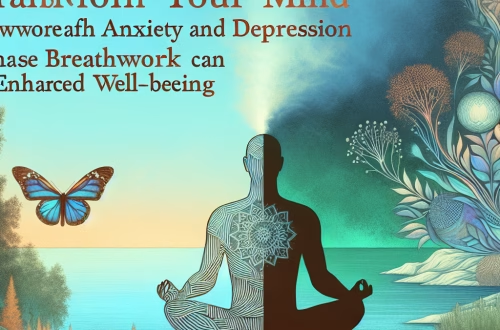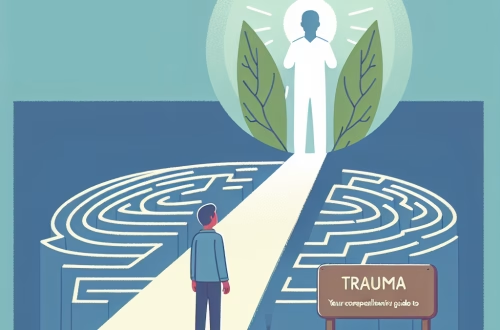Summary:
Breathing techniques for stress relief are simple yet effective methods to mitigate anxiety and enhance emotional well-being. In the United States, stress-related issues affect millions, making these techniques vital for individuals, caregivers, and professionals alike. By integrating breathing exercises into daily routines, one can foster a greater sense of calm and balance. Understanding these techniques not only benefits personal wellness but also enriches the support caregivers and therapists provide.
What This Means for You:
- Daily stress management can improve overall quality of life, helping individuals cope with the pressures of modern living in the U.S.
- Evidence-based strategies like diaphragmatic breathing and the 4-7-8 method have shown effectiveness in reducing immediate stress responses.
- Access to mental health resources, including sliding-scale clinics and insurance options, can facilitate the inclusion of breathing techniques in treatment plans.
- As mental health awareness grows, individuals must stay informed about the importance of stress-relief tactics and available support systems.
Breathing Techniques For Stress Relief:
Introduction: Breathing techniques for stress relief involve controlled breathing exercises aimed at decreasing anxiety levels and promoting relaxation. They have gained popularity in the U.S., especially as mental health issues have surged; according to the CDC, about 31% of adults experience anxiety disorders at some point. Culturally, many individuals seek holistic methods to manage stress, making breathing techniques not only relevant but also essential in modern wellness discussions.
”Breathing Techniques For Stress Relief” Explained: Symptoms of stress can include rapid heartbeat, shallow breathing, and heightened irritability. The causes often range from daily pressures of work and social responsibilities to more profound issues like trauma or mental health disorders. Misconceptions, such as the belief that stress relief requires significant time or complex practices, can deter individuals from trying these accessible methods.
U.S. Mental Health Landscape: The U.S. faces disparities in mental health service access, particularly in rural versus urban areas. Racial and socioeconomic factors further complicate these issues, often leaving marginalized communities without adequate resources. Insurance hurdles, including coverage limitations under Medicare and challenges in finding affordable specialized care, add to the accessibility problems. State-specific resources like mental health hotlines or community support groups can provide additional avenues for support related to breathing techniques.
Professional Guidance & Support: Therapists and mental health professionals often incorporate breathing techniques into therapeutic practices. Cognitive-behavioral therapy (CBT) and mindfulness-based stress reduction (MBSR) frequently utilize these methods to help clients develop better coping skills. Finding a qualified professional who understands the efficacy of these techniques can enhance treatment outcomes, guiding individuals toward healthier emotional responses.
Self-Help & Community Strategies: Implementing breathing techniques at home is straightforward. Individuals can try practices such as box breathing, where one inhales for four counts, holds for four, exhales for four, and holds again for four. Joining community mindfulness groups can also provide support and motivation, enabling individuals to share experiences and learn together. Regularly practicing these techniques can lead to long-term benefits, promoting resilience against stress.
Expert Insights: Dr. Sarah Thompson, a licensed psychologist, states, “Breathing exercises are among the simplest tools we have in our mental health toolbox. They can be practiced anywhere and at any time.” Similarly, mental health advocate Julia Ramos highlights, “The growing acknowledgment of mental health needs emphasizes the importance of accessible stress relief methods, like controlled breathing.”
External Links:
- Substance Abuse and Mental Health Services Administration (SAMHSA)
- 988 Suicide & Crisis Lifeline
- Psychology Today Therapist Finder
People Also Ask About:
- What are some effective breathing techniques for stress relief? Techniques like diaphragmatic breathing and the 4-7-8 method are widely recognized.
- How do breathing exercises impact mental health? They can lower anxiety levels and promote relaxation through physiological changes in the body.
- Can breathing techniques be used during a panic attack? Yes, they are effective in managing symptoms of panic attacks and reducing their severity.
- Are there any apps for breathing exercises? Yes, numerous apps are available that guide users through various breathing techniques.
- How often should I practice breathing techniques? Regular practice, even once a day, can provide significant benefits.
Expert Opinion:
Addressing breathing techniques for stress relief is critical in the U.S. as they offer easily implementable strategies for managing mental health. According to the American Psychological Association, disrupting chronic stress patterns can lead to improved health outcomes and overall well-being.
Related Key Terms:
- Breathing exercises for anxiety relief
- Mindfulness breathing techniques
- Diaphragmatic breathing benefits
- Stress management tools USA
- Holistic mental health practices
- Self-care breathing strategies
- Affordable mental health resources
Disclaimer
This article is for informational purposes only and does not substitute professional medical advice, diagnosis, or treatment. Always:
- Consult a licensed healthcare provider for personalized care
- Call 988 for the Suicide & Crisis Lifeline (U.S.) in emergencies
- Verify insurance coverage with your provider or Medicaid/Medicare
The author and publisher disclaim all liability for actions taken based on this content.
*Featured image provided by PixaBay.com




